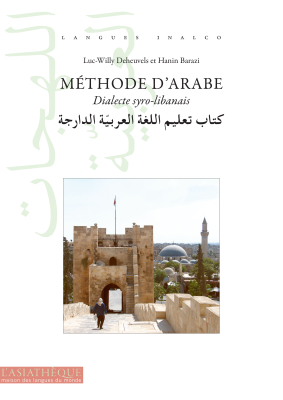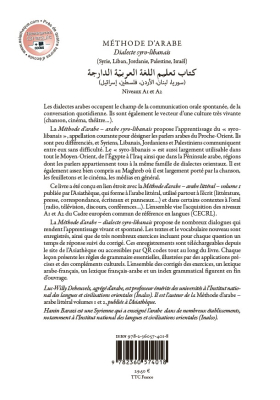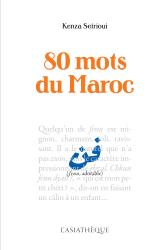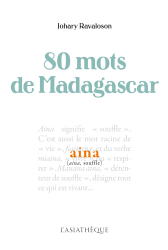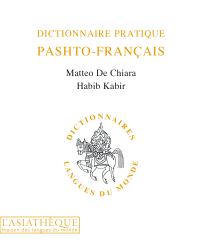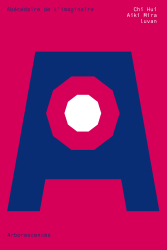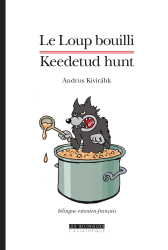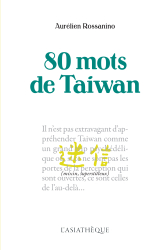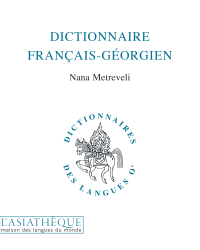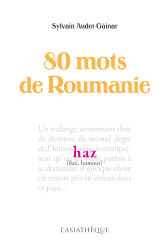Méthode d'arabe - dialecte syro-libanais
The "Arabic Method, Syro-Lebanese dialect" was designed in close connection with the "Arabic Method, Literal Arabic, volume 1", published at the Asiathèque, the progression of which it follows. The texts and situations as well as the tasks have been adapted, which makes it possible to identify variations as closely as possible. Transfer rules between literal and dialect are presented to facilitate learning. Parts specific to literal Arabic are not included in the dialectal Arabic book. New situations, involving spoken language, have been added (for example: a scene from a play).
The combined use of the two works makes it possible to respond to all real communication situations, both oral and written, in accordance with the Common European Framework of Reference in Languages (C.E.C.R.L.). All aimed at levels A1 and A2.
All statements are offered both in Arabic characters and in transcription, which allows you to follow the method without knowledge of the Arabic alphabet, only with the transcriptions. For the learner who already knows literal Arabic, the transcription is useful as a complement because, if the Arabic alphabet is fully adapted for literal Arabic, it is much less so for the dialect which has specific phonemes. Each of the fifteen lessons includes dialogues and texts accompanied by vocabulary presenting the word in Arabic script, in transcription and translation. The arrangement of the vocabulary, in columns, simplifies memorization and notably allows the use of caches.
Each lesson introduces essential grammar rules. All explanations are deliberately simplified, so as to allow the self-taught non-specialist to find guidance without difficulty. The rules are always illustrated by precise applications and often deduced from examples already memorized during previous lessons.
A section at the end of the lesson offers cultural complements and typical words and expressions. The translation of the texts and dialogues of the lesson is presented to facilitate learning. Exercises complete each lesson to work on comprehension and expression skills as well as all grammar points. The answers to the exercises are provided at the end of the volume. As well as a bilingual glossary, which brings together all the vocabulary, and a bibliography, which offers some reference works.
The numerous audio recordings include, for each lesson, the texts and dialogues as well as the vocabulary (accessible by QR codes and free download).
Note: “Syro-Lebanese” refers to the Arabic languages of the Middle East (Syrians, Lebanese, Jordanians, Palestinians, Arabs of Israel communicate with each other without difficulty). It is also widely used throughout the Middle East, from Egypt to Iraq as well as in the Arab Peninsula, regions whose languages all belong to the same family of oriental dialects. It is also quite well understood in the Maghreb where it is widely supported by songs, soap operas and cinema, and the media in general.
MEDIA LIBRARY
Audio recording
CONTRIBUTORS' BIOGRAPHIES
Luc-Willy Deheuvels

Luc-Willy Deheuvels has an agrégation in Arabic and is Professor Emeritus at the Institut national des langues et civilisations orientales (Inalco). He is the author of Méthode d'arabe - arabe littéral volume 1, published by L'Asiathèque. The two volumes of the new method will replace the Manuel d'arabe moderne volume 1 and the Manuel d'arabe moderne volume 2 by the same author, previously published by L'Asiathèque.e moderne volume 1 and the Manuel d'arabe moderne volume 2 by the same author, previously published by L'Asiathèque.
Hanin Barazi
Hanin Barazi is a teacher-researcher at the National Institute of Oriental Languages and Civilizations (Inalco). She also taught Arabic at Paris 3 Sorbonne Nouvelle, at ENSEAM, at the CMA (Cours Municipaux d'Adultes) of the City of Paris, and at the American University of Chicago in Paris.
